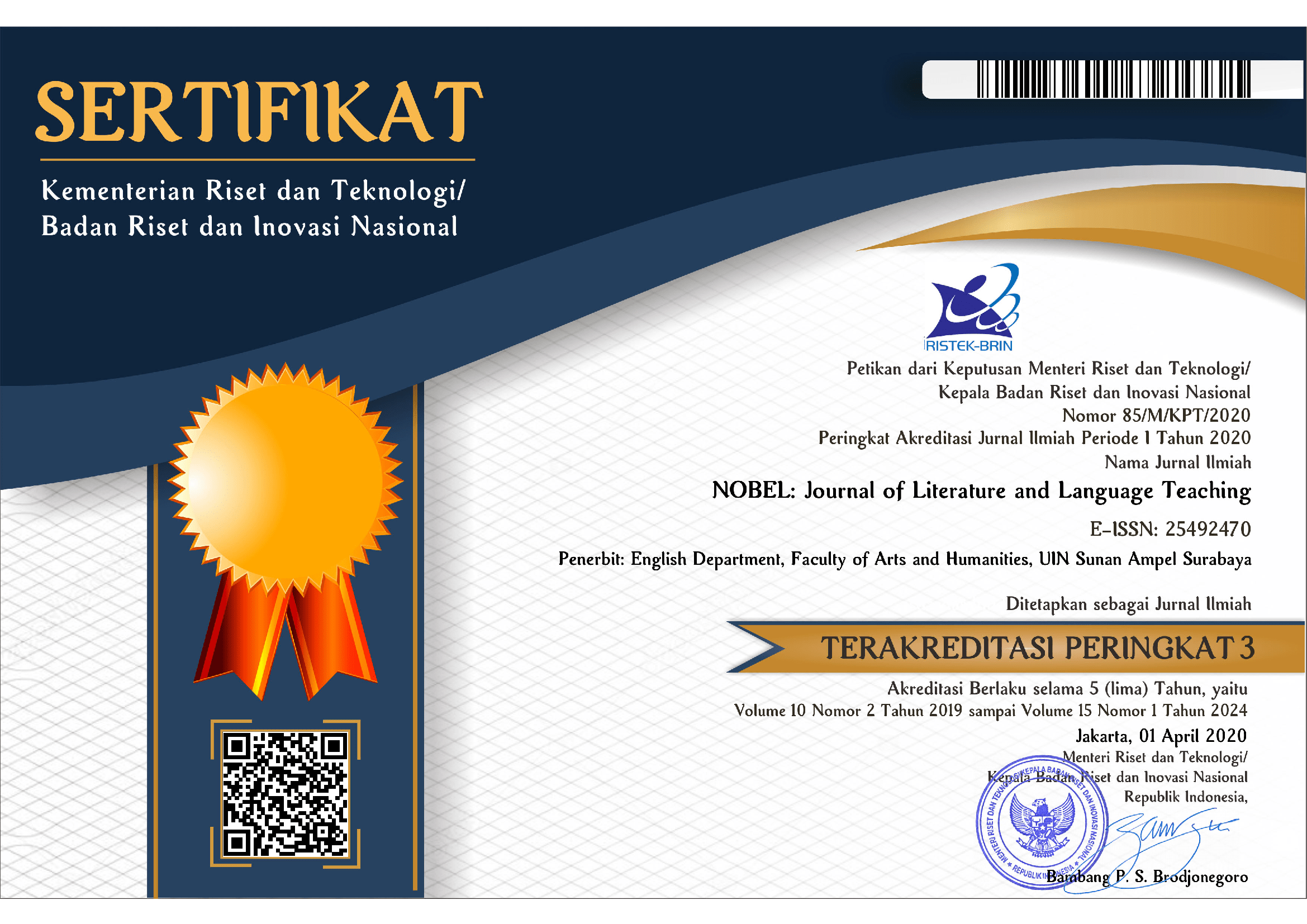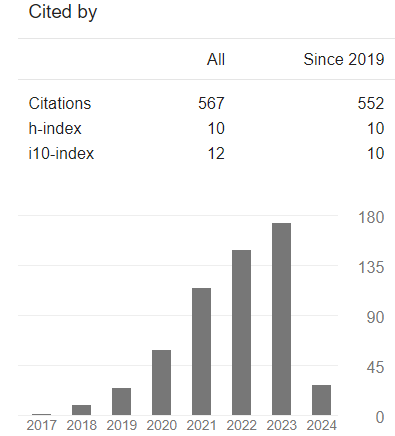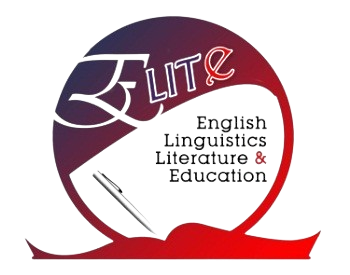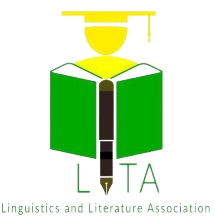Integrating Islamic Values into ESP Reading Material
DOI:
https://doi.org/10.15642/NOBEL.2019.10.2.149-162Keywords:
Islamic Values, ESP Reading MaterialAbstract
This present research is aiming at developing suitable instructional reading material for the students of Islamic Education Department. The procedure employed in this study was R&D model proposed by Dick and Carey, namely, need analysis, developing reading materials, expert validation, revising the materials, trying out the materials, and revising the materials. The result shows that reading materials must be developed by incorporating major content subject, namely Islamic studies, list of vocabulary, grammar review, and reading comprehension exercises. Furthermore, after being tried-out, it shows the applicability of the developed materials in helping the students to accomplish the mastery of reading skills and improve their learning motivation. In spite of the strength of the material developed, it is still tried-out in the small scale; therefore, the materials were still possible to be revised.
Downloads
References
Alexander JE. (1998). Teaching reading. Boston: Scot, Foresman, and Company.
Borg., M. Gall. D. (1983).Educational research: An introduction. New York: Longman, Inc.
Budianto, L. (2003). Developing the English syllabus for the students of nursing academy in Muhammadiyah university of Malang.Unpublished Thesis. Malang: Graduate Program in English Language Education State University of Malang
Day, R.R. (1994). Selecting a passage for the EFL reading class. English Teaching Forum, Vol. 32 No. 1, January, 20-24.
Dick, W., Carey, L. (1990). The systematic design of instruction. USA: Harper Collins Publishers.
Ellington, H. (1985). Producing teaching materials: A handbook for teachers and trainers. London: Kogan Page Ltd.
Finney, D. (2002). The ELT curriculum: A flexible model for a changing world. In Richards & Renandya (Eds.), Methodology in language teaching: An anthology of current practice. Cambridge: Cambridge University Press. 2002from http:// www.jalt-publications.org/tlt/articles/20 02/07/grabe
Gebhard.J. (2000). Teaching English as foreign or second language. Michigan: The University of Michigan Press.
Grabe, W. (2002). Foundations for L2 reading instruction. The Language Teacher Online. Retrieved November 15, 2018, from http://jalt-publications.org/old_tlt/articles/2002/07/grabe
Grabe, W. (2009). Reading in a second language: moving from theory to practice. Cambridge: Cambridge University Press.
Halim, T. 1999. Developing reading comprehension materials for graduate students of the state university of Malang. Unpublished Thesis. Malang: PPS UM.
Hanifah.,Afidah, N. (2018). Developing textbook by using reading strategic based instruction method for shariah economy department. Journal of English Educators Society, 3 (2), 155-164.
Harahap, R. (2015). Designing English reading materials for an extracurricular program of al-munawwariyah islamic junior high school Muhammadiyah II Malang. Unpublished Thesis Malang: Malang Islamic University.
Harmer, Jeremy. (2002). The practice of English language teaching (3rd Edition). London: Longman.
Hutchinson, T., Waters, A. (1991). English for specific purposes: A learning-centered approach. Cambridge: Cambridge University Press.
Hyland, K. (2003). Second language writing. Cambridge: Cambridge University Press.
IAIN Ponorogo. (2015). The national qualification framework (KKNI) curriculum of IAIN Ponorogo. Ponorogo: IAIN Ponorogo
Jiajing, G. (2017) Designing an ESP course for Chinese university students of business. Retrieved Noveber 15, 2018, from http:// www. esp-world.info/index.html
Johnston, B. (2003). Values in English language teaching. Mahwah, NJ: Lawrence Erlbaum Associates.
Kintsch, W. (2004). The construction-integration model of text comprehension and its implications for instruction. Theoretical models and processes of reading, 5, 1270–1328.
Nunan, D. (1998). Principle for designing language teaching materials: Guidelines periodical for classroom language teachers Vol. 10 No. 2. Singapore: SEAMEO Regional Language Center.
Orr, T. (2017). ESP for Japanese universities: A guide for intelligent reform university of Aizu. Retrieved November 5, 2018, from http://www.jalt-publications.org/tlt/files/98/nov/orr.html
Richard, J.C.(2015). Developing speaking activities. From theory to practice. Retrieved February 14, 2015 from http://www.professorjackrichards.com/pdfs/developing-classroom-speaking-.
Richards, J. C. (2001). Curriculum development in language teaching. Cambridge: Cambridge University Press.
Rohmah, Z. 2012. Incorporating Islamic messages in the English teaching in the Indonesian context. International J. Soc. Sci. & Education, 2(2), 157-165.
Tomlinson, B. (1998). Materials development in language teaching. Cambridge: Cambridge University Press.
Tomlinson, B.,Masuhara, H. (2004). Developing course materials: RELC Portfolio Series 11. Singapore: SEAMEO Regional Language Center.
Usadiati, W. (1999).Developing A model of ESP reading materials for team-teaching using content based approach. Unpublished Thesis. Malang: PPS UM.
Zwaan, R. A., & Rapp, D. N. (2006). Discourse comprehension. Handbook of psycholinguistics, 2, 725–764.







